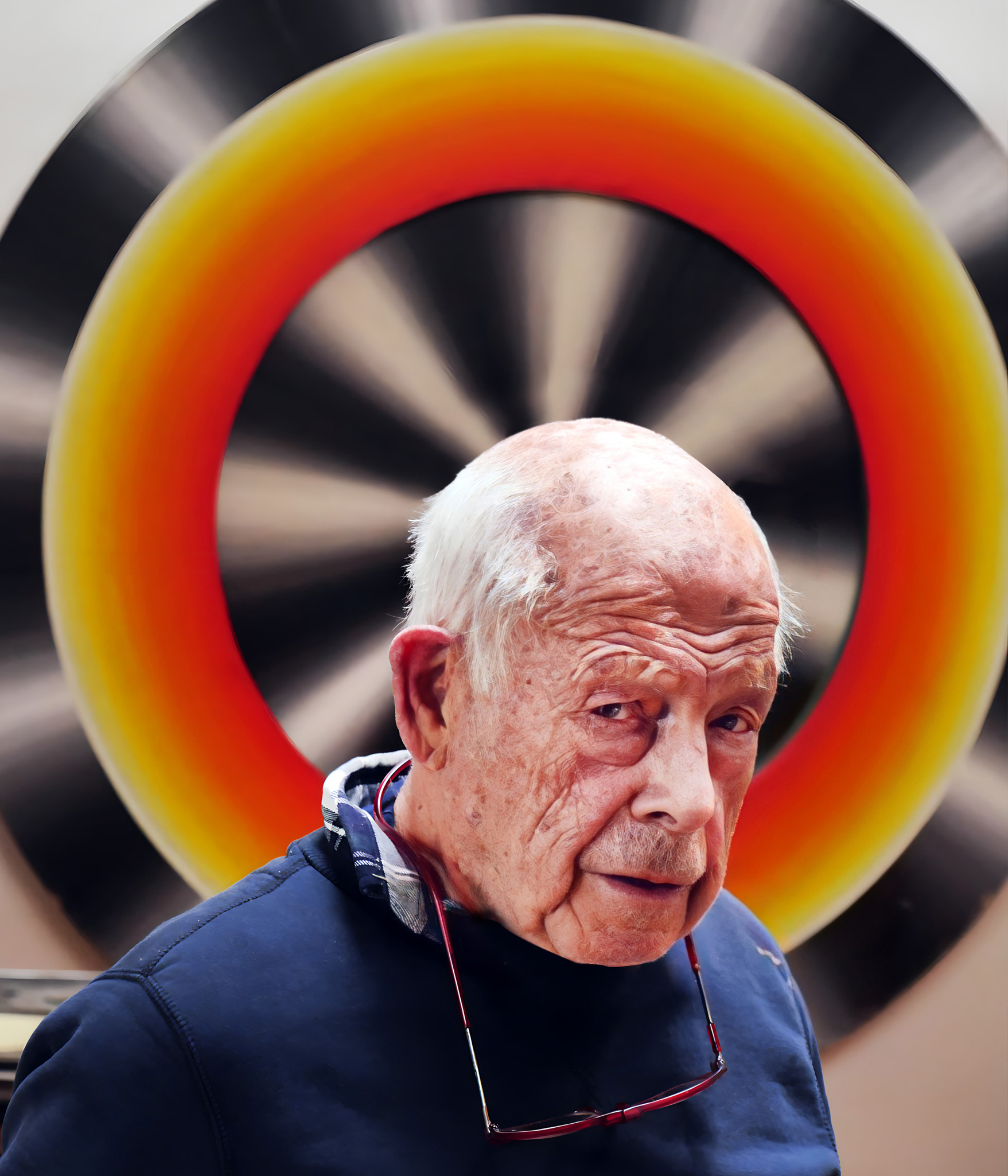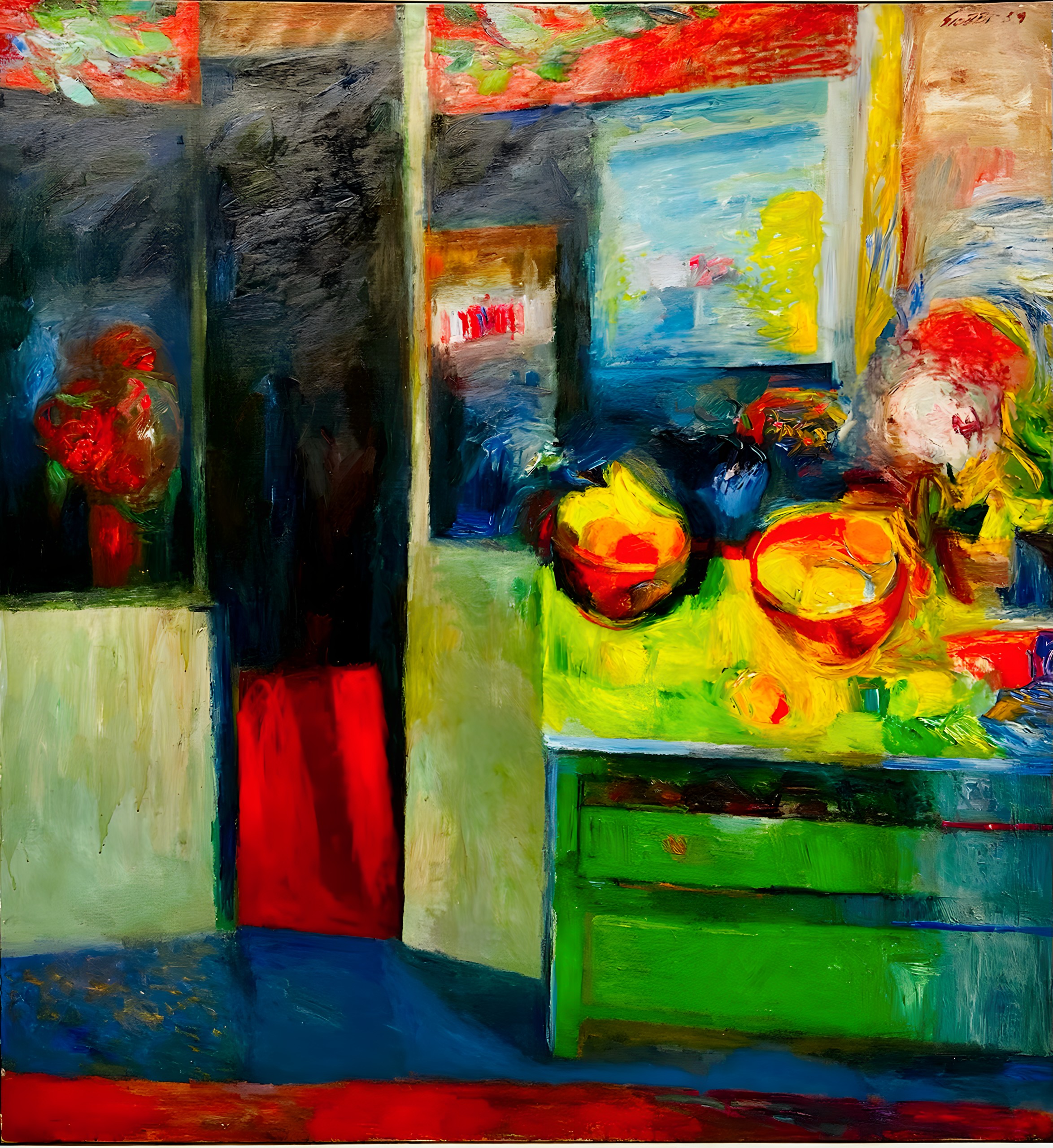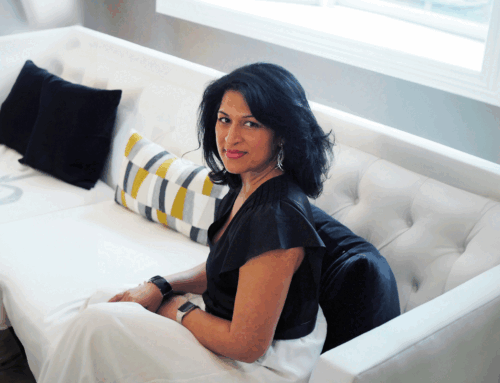Ialways had a particular problem with truth and beauty,” says Katonah resident and world-renowned artist Ed Giobbi. “Every time I would read about truth, it was treated as a separate subject from beauty. And then I read [poet John] Keats: “Beauty is truth, truth beauty,” – that is all Ye know on earth, and all ye need to know. Those words really hit me. That’s what the struggle is all about. Find your truth, and you’ll find yourself. I promise you, it will be beautiful.”
For nearly a century, Giobbi has lived his life in pursuit of his truth. He has searched for it through painting and sculpture, through cooking and writing, through war and love. His pursuit has earned him a place among the masters of American art. His work is part of the permanent collection at the Museum of Modern Art, The Whitney, The Tate, The Smithsonian and many other museums throughout the world.
Giobbi is also a master in the kitchen. He finds his truth in food, deriving history, nature, family and culture in the dishes he prepares. Every ingredient allows him to weave a memory, going backward from his own years in Tuscany to his childhood in Waterbury to even as far back as the Renaissance. This reverence for food earned him a James Beard award and several highly-recognized cookbooks. He is even credited with introducing pasta primavera to the United States.
Along the way, Giobbi developed friendships with the likes of chef Jacques Pépin and artist Robert Motherwell. He says Mark Rothko was “a bit quiet,” and he had little use for Jackson Pollock and Willem de Kooning, both of whom he considered, “vulgar and loudmouthed.”
“They’d go out for drinks and run up a bill,” recalls Giobbi. “The waiter would hand them the check and they’d say, ‘Give it to Motherwell. He’s rich.’ I wouldn’t have been caught dead going anywhere with those guys.”
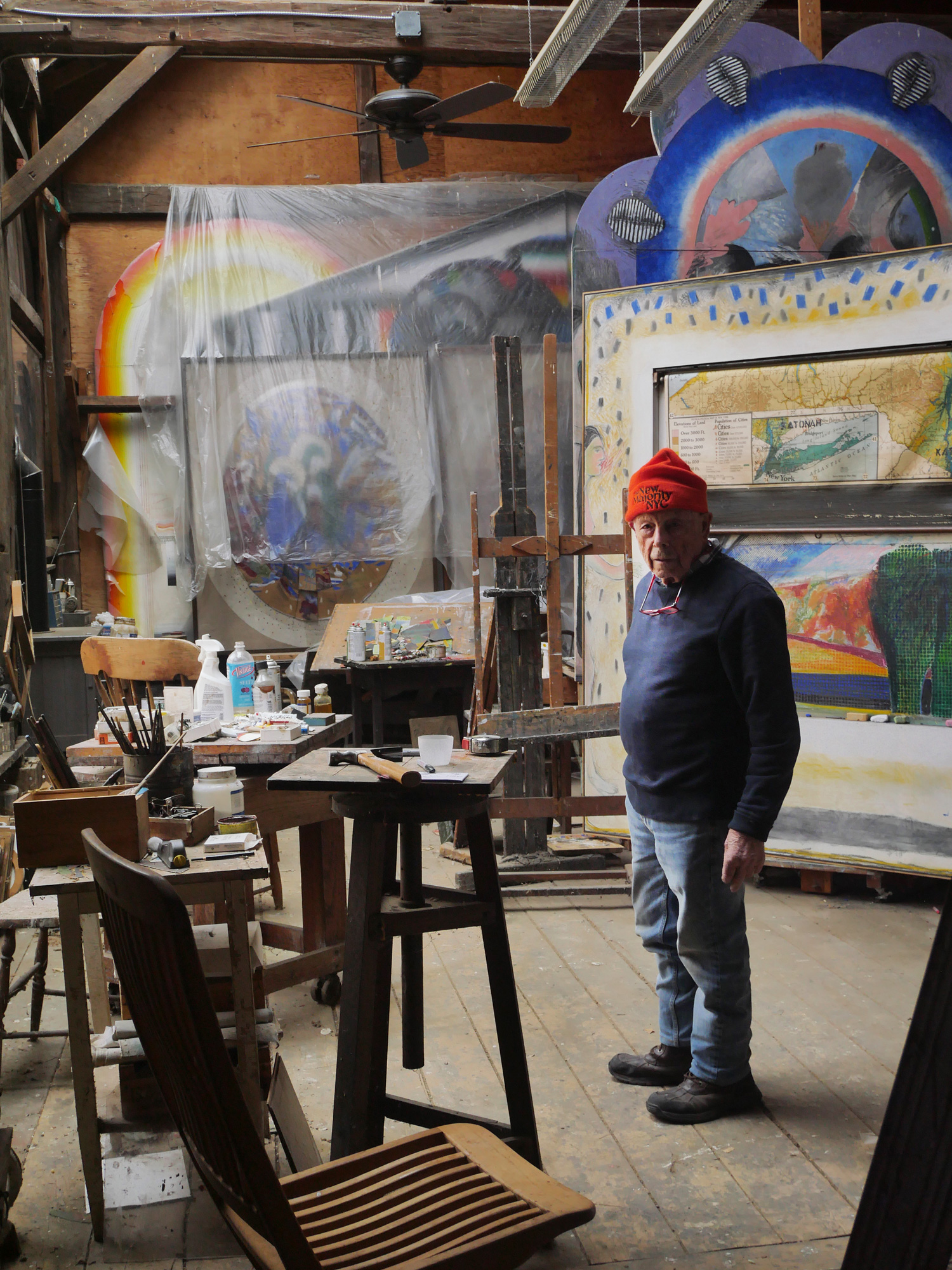
Searching for truth
From his professional life to his personal one, Giobbi pursues his truth. Some of his paintings tell stories of mythology and history. Others reveal personal emotions pertaining to his family and home. And some reflect his own studies of color and light. The arc of his artistic career varies tremendously, never really suffering the trappings of expectation and style. For Giobbi, the only concern has been the pursuit of truth.
“If you find your truth, everything else will follow,” he advises. “It doesn’t matter what the subject matter is, as long as it’s true to you.”
In 2011, Hurricane Irene swept through Katonah and left Giobbi’s studio in devastation. Even then, he found truth and beauty in the wreckage.
“The studio was destroyed,” Giobbi remembers. “The paintings were torn apart from all the broken glass and framed watercolors. It was the most gorgeous thing. The energy of the hurricane did that. Such beauty. I thought a great exhibition would be to dump all of that stuff on the floor of a museum. Because then you’re really aware of the strength and the beauty of nature.”
As the cleanup began, and he collected decades of ravaged work, Giobbi noticed something in the fragments of his art.
“I couldn’t get over how well these different pieces from different parts of my life fit together,” he says. “And then it hit me. I’m the same person now as I always have been; the same person at eighty years as I was at eighteen.”
For the next five years, Giobbi created collages from this destroyed art, assembling a unified image from shards and strips of seemingly unrelated work. He called the series “Up Yours, Irene.”
“The collages reflect decades of my life,” says Giobbi, “But somehow, they all connect. They are all part of one story.”

Living in poverty
Giobbi grew up in Waterbury, Connecticut. Both his mother and father immigrated from central Italy and found a home in a predominantly working-class neighborhood.
“My father worked in a brass mill for many years,” recalls Giobbi. “He learned to trade and was a machine operator. But during the Depression, he lost his job and was out of work for a long time. Everybody from our group was out of work, honestly. We were broke, yes, but poverty isn’t so bad if you know how to take care of yourself.”
Giobbi and his family found ways to get by. His father and uncle would fish with a homemade net, bring their catch back home and cook it with fresh pasta and vegetables. Eating well, even in poverty, was a priority. Meanwhile, Giobbi himself would scour the neighborhood looking for scrap metal to sell for extra change and an occasional candy.
It was during this time that he obtained a set of pastels and eventually some oil paints. He immediately fell in love with art.
“I don’t know why I started,” says Giobbi. “All I know is that I was drawing all the time. I had a little closet that was fixed up with a desk and a place to store my paintings. And I would go up there and paint all day. I never had a lesson, which was good, because I didn’t have too much trash to get rid of from mediocre teachers.”
Giobbi received both concern and encouragement from his family and friends. One piece of advice stuck with him above all else.
“When I was five years old, a friend of my father asked me what I wanted to be when I grew up,” he says. “I said that I wanted to be an artist. ‘Remember,’ he told me, ‘there’s always room on top, but there’s no room in the middle. You have to be great to survive as an artist. You can’t just be fair. Sure, you can be a miserable lawyer or a dumb politician and still do well for yourself, but you won’t get away with that in the arts.’ He was right.”

Going to war
“I was born in America but never felt American as a boy,” says Giobbi. “I didn’t relate to Americans. I was never called an American. Italians faced a great deal of discrimination in this country, especially then. When the war broke out, I enlisted largely because I wanted to prove that Italian-Americans were every bit as capable to fight as Anglo-Americans were.”
Giobbi got his chance to prove himself. He was sent to Europe, and he traversed across France, Austria and Italy where he liberated concentration camps and engaged in battles as he and his fellow soldiers went along.
“On one occasion, we had been pinned down by machine gun fire for half a day,” recalls Giobbi. “I was laying down behind a tree with my face buried in the snow from the early morning until the sun started to set. I had to find a way to get through it. It was springtime in the Austrian mountains, and I remember the earth smelled so sweet. It was the scent of the wild mushrooms I used to pick in Connecticut with my father. That memory of food and family got me through it.”

Pursuing his art
After the war, Giobbi fully committed himself to art. He first traveled to Boston and Provincetown where he studied with painter Henry Hensche who had learned impressionism while living in France at the end of the 19th century.
“He [Hensche] would teach you how to put down colors as you see them, not as they are,” says Giobbi “That’s what impressionism is about.”
He would spend hours every day painting the nature around him, studying the subtle color changes as the sun shifted. It was a process that helped him become acutely aware of color and how it interacts with light.
“One of the hardest things to paint is an autumn leaf,” says Giobbi. “You’ll look at the leaf and see cadmium red becoming a cool purple. But when you mix the colors, you can’t understand why it doesn’t work. The colors don’t come through the way they do when you look at them. But you have to remember that a leaf is paper thin, so when the light hits those colors, it’s actually behaving more like a stained glass window. That’s how nature does it. As an artist, you can’t do better than that.”
Giobbi moved to New York in 1949 and continued to work as an artist, spending time at the Art Students League of New York and developing broader connections in the artistic community. The League would prove to be more important later, when Giobbi would meet his wife, Elinor Turner, in a sculpture class. Before that would happen however, he would first encounter the other love of his life, Italy.
When Giobbi moved to Florence in 1950, he began studying at the Accademia di Belle Arte in Florence and immersed himself in the culture of the city. Already influenced by his Italian upbringing, he thrived in the Tuscan region, immersing himself in the art and food all around him.
This time, he nurtured his love for the Renaissance period, spending his days pondering the likes of da Vinci and Michelangelo, learning how they worked and how they thought. Giobbi would walk the city for hours analyzing the anatomy of sculptures around him.
“These master artists were more than good, more than special,” says Giobbi. “They really hit it, and I always felt it was important to learn from them so that I could pass on the information to the younger people. That act is as important as creating the work itself.”
Giobbi can trace his own family lineage to the painter Giotto di Bondone from the Late Middle Ages. Perhaps unsurprisingly, this happens to be Giobbi’s favorite artist.
“Giotto is the first person to bring humanity into painting, and that’s a major part of the Renaissance,” Giobbi explains. “Before that, you had Greek art, which was every bit as beautiful but lacked humanity. Their sculpture subjects looked more like gods. It was Giotto that brought humanism to his art. He opened the door for the Renaissance, and it took the Renaissance fifty years to walk through it.”

Refusing to conform
It’s difficult to label Giobbi’s style, and he is the first one to criticize anyone’s attempts to do so. For Giobbi, what matters most is speaking his truth and not adhering to anyone’s preconceptions.
“I was always trying to understand art in a real way, not in the way critics and scholars do,” he says. “They get their own emotional needs involved, their own truth. But the purpose of a serious painter is to find his personal truth and no one else’s. Because when he’s up in the studio by himself, it’s only his truth that matters.”
While he is sometimes considered an abstract expressionist, he views it differently.
“That’s just a nonsense phrase invented by critics,” Giobbi scoffs. “There are so many people in the art world who just want people to know their names. They aren’t willing to really put in the work to understand what’s in front of them. They know how to look, but they don’t know how to see.”
Giobbi creates art with paints, pastels, watercolors, collage, metals and more. He uses everything from traditional canvases and homemade fresco-style canvases to leatherbound journals and ripped cardboard. If it accomplishes what he wants, Giobbi will use it. Orthodoxy be damned.
He isn’t afraid to use color, often painting with bright deliberate hues juxtaposed with deep dark forms. In doing so, Giobbi orchestrates everything from death and violence to the sunlit pedals of a flower.
“Black is the most beautiful color,” he says. “There is more color in black than anything else if you know how to look for it. Black is the truth.”
His artistic influences range from the masters of the Renaissance to more recent painters such as Picasso and Matisse.
“People will see a Matisse painting and say, ‘My own child can paint like that’, not realizing that’s the whole point of what Matisse was trying to do,” says Giobbi. “He was trying to get back to pure emotion. A great artist doesn’t need much to show everything.”
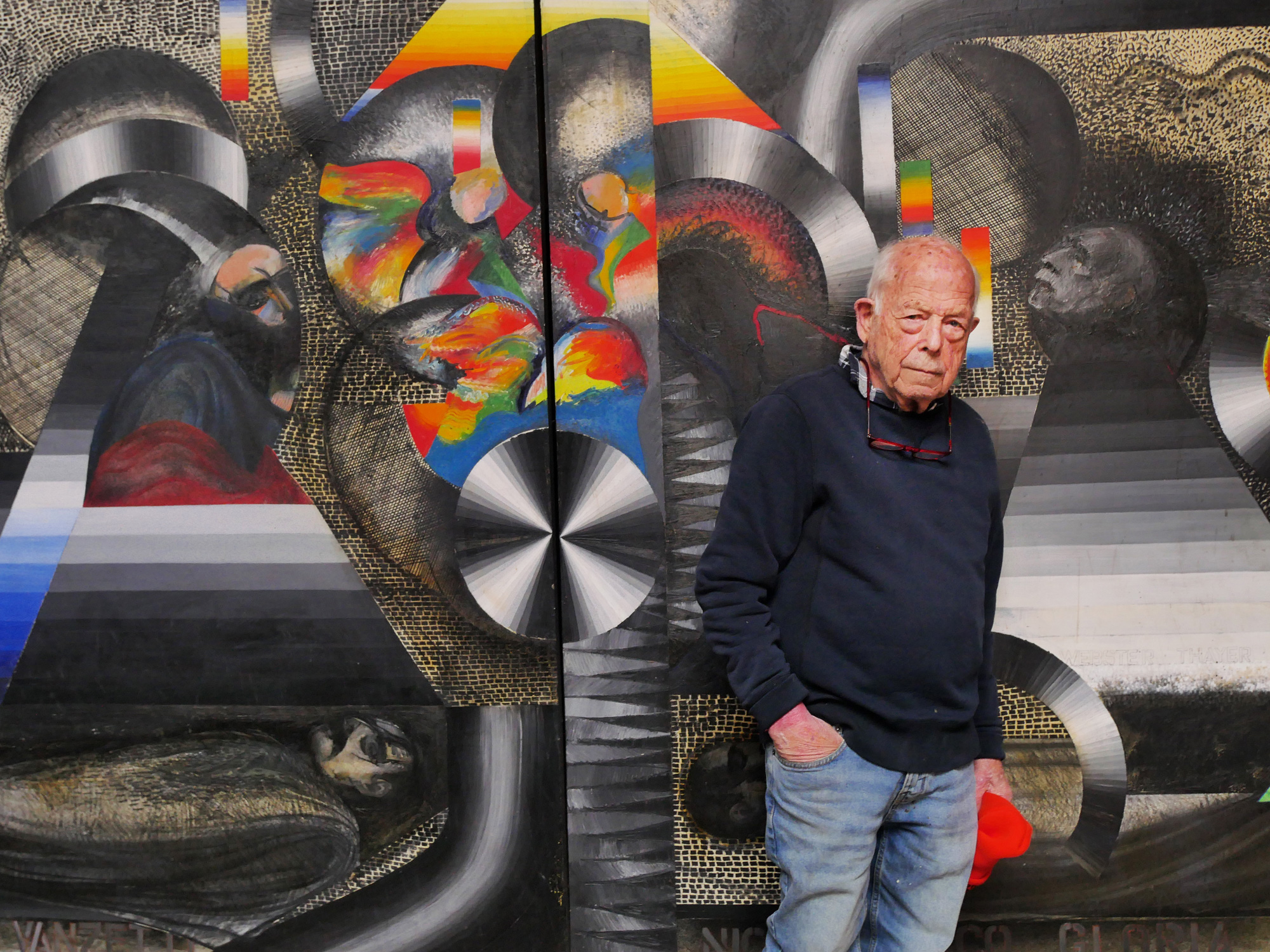
Learning about food
Not many people would attribute a James Beard award to their side hustle. Yet that’s what happened to Giobbi. A self-taught chef, he always had a passion for cooking and bringing the traditions of his Italian heritage to the American public.
“Anything you’re good at comes from a love for it,” says Giobbi. “I always loved cooking.”
From an early age, cooking was an important part of his life, with both of his parents making fresh pasta tossed with rosemary, marjoram, rabbit, chicken and more. It was not the meal one would expect for a family in poverty, yet Giobbi’s family treasured quality food. When he went out on his own, this dedication followed him.
“How well you eat simply depends on how seriously you take the food going into your belly,” says Giobbi. “Sure, you can eat in those cheap eateries if you want. As for me, I wanted to save money and didn’t want to kill myself before my time. You can eat quality food on a budget, but it has to be seasonal. Fresh vegetables, very little meat.”
While in Italy, Giobbi carefully studied Tuscan dietary habits. When he returned to America, he had new ideas for cooking, using ingredients and techniques, none of which were used in the United States.
Living in Katonah, Giobbi was introduced to a local neighbor, Craig Claiborne –The New York Times food editor.
“Claiborne liked to write about home cooks as much as restaurant chefs,” says Giobbi. “I think he viewed it a bit like the people in the standing-only section at the opera. Anyone who can stand through an entire opera is a true opera fan. It’s the same with people who love to cook.”
After trying Giobbi’s food, Claiborne invited him to a party at his house in East Hampton to demonstrate his skills along with several other chefs, both professional and home trained.
Giobbi remembers it well.
“He [Claiborne] invited forty chefs and cookbook writers to cook for one hundred guests,” he describes. “I knew the kitchen at this party would be overcrowded, so instead, I used a homemade rotisserie outside that would hold a baby lamb up to twenty-five pounds. I made a mint sauce, which I created myself using a sweet mint that they only had in Italy called mentuccia. I added pine nuts, garlic and chicken broth to thin it out. While the food was cooking, I brought out my watercolors and a large canvas, and I began to paint the lamb. People started photographing me as I did this. The chefs at this party loved the meal and brought the recipe back to their kitchens, including Jacques Pépin who became a friend of mine. I later gave the painting to Claiborne as a gift.”
Giobbi authored multiple cookbooks (which he illustrated, of course), and he continued to cook alongside friends like Pépin who credits Giobbi with, among other things, introducing pasta primavera to the United States. Pépin still cooks this recipe himself, which he thoughtfully refers to as “Pasta Ed Giobbi.”
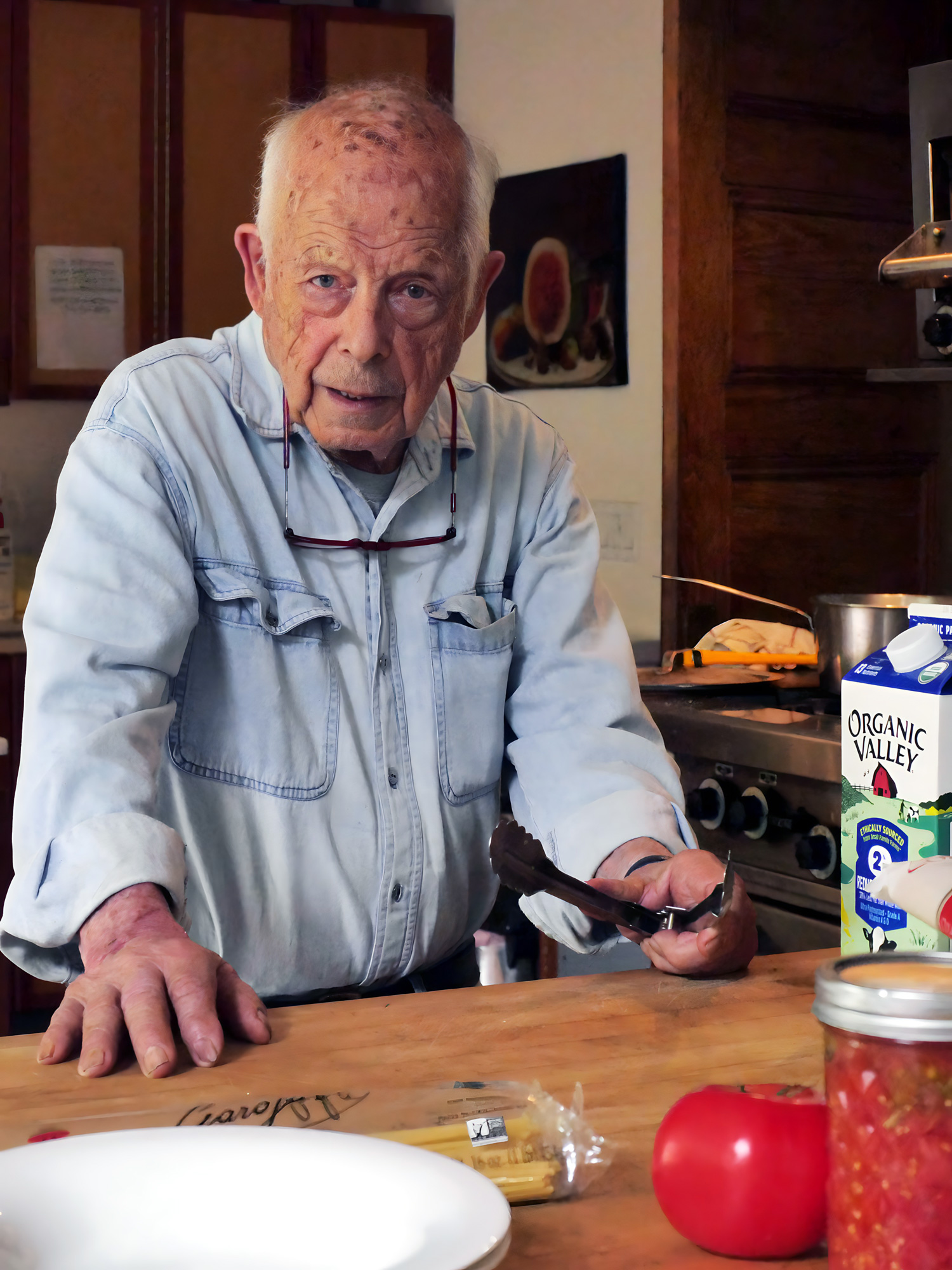
Finding his truth
“A teacher once criticized my seven-year-old daughter for painting the sky red,” remembers Giobbi. “My daughter told the teacher that it was a hot day out, so she made it red. She was right. That’s what an artist does. But the teacher didn’t like that. I told my daughter that when she’s in the classroom, she needs to listen to her teacher. But the minute she leaves the classroom, forget all of it.”
But, he does believe that art is about learning and finding yourself.
“I satisfy myself. That’s it. It’s all about learning for me. I paint one painting so that I can paint the next one better. Opinions don’t really change it. It’s nice when I get a positive opinion, but it doesn’t move me one iota. I listen to myself and nobody else.”
He continues to create new work for himself as a source of peace and meditation.
“I keep a painting journal every day,” he says. “I started it not long after my wife died. I call them letters to Ellie. Up there, they know everything. She’ll be able to read it. For me, they are really meditations. I don’t have a computer; I don’t have a cell phone. I have nothing mechanical that excites me. Except for the damn television set that never works.”
On one occasion, Giobbi created a painting of his house in Katonah. A friend viewing the painting asked him why it looked so sad and dark. Giobbi thought about it, but he couldn’t figure it out.
“I painted the house again, and then again,” he says. “Eventually, I realized that I wasn’t painting my house at all. I was actually painting my old house in Provincetown. I loved that house, and it broke my heart to leave it. As I continued to paint, I started to get the anger out. It became more gentle each time, until it was eventually just another ordinary house. Still, I continued to paint it. In the last three paintings of the series, the house almost disappears from the canvas. In the final piece, the house is gone completely. I didn’t plan that. It just came out. It was time to let it go.”
These days, Giobbi is aware of who he is and finds value in sharing his thoughts with others.
“We all have our own understanding, our own intelligence,” he muses. “We can pass this on and maybe help somebody else to see the beauty of what we’ve seen, or the suffering. When we open a door for ourselves, we are also opening it for others.”
He hopes that everyone walks through that door and finds their own truth.
Giobbi’s work is on display at Chroma Fine Art Gallery in Katonah through July 16.
This article was published in the July/August 2023 print edition of Katonah Connect.
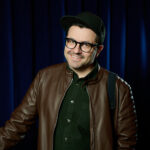
Justin is an award-winning designer and photographer. He was the owner and creative director at Future Boy Design, producing work for clients such as National Parks Service, Vintage Cinemas, The Tarrytown Music Hall, and others. His work has appeared in Bloomberg TV, South by Southwest (SXSW), Edible Magazine, Westchester Magazine, Refinery 29, the Art Directors Club, AIGA and more.
Justin is a two-time winner of the International Design Awards, American Photography and Latin America Fotografia. Vice News has called Justin Negard as “one of the best artists working today.”
He is the author of two books, On Design, which discusses principles and the business of design, and Bogotà which is a photographic journey through the Colombian capital.
Additionally, Justin has served as Creative Director at CityMouse Inc., an NYC-based design firm which provides accessible design for people with disabilities, and has been awarded by the City of New York, MIT Media Lab and South By Southwest.
He lives in Katonah with his wonderfully patient wife, son and daughter.


